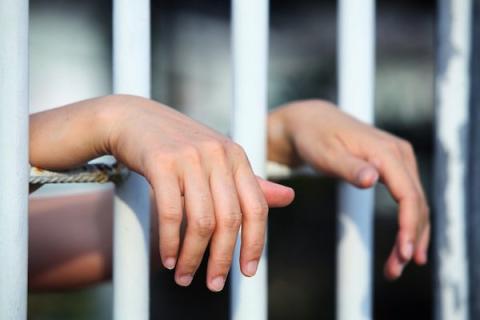California's correctional system has received a federal order to release 9,600 prisoners by December. Administrators are no longer able to avoid releasing inmates early and the governor claims the terms are too strict for the system's rate of change.
The Supreme Court believes the rate of change is far too slow. According to a study from californiabudgetbites.org, the California prison population has dropped 17.2 percent since realignment began in 2011 -- reducing the number of inmates to levels close to those of the mid-90s.
However, spending per inmate has soared from $33,000 in 1995 to $60,000 today, an 82.3 percent increase accounting for inflation. By comparison, K-12 spending has increased only 17.9% since 1995 with inflation adjustments. That means spending on current prisoners has risen five times faster than spending on students.
Although the number of inmates has leveled at '95 figures, staffing levels are "significantly higher" today than they were 18 years ago, with salary increases and fixed costs like leases and utilities accounting for large portions of the increases.However, the bulk of the expense comes in $2 billion allotted for health care expenses, tripling the 1995 $590 million figure.
To complicate matters, these expenses are court-ordered and unavoidable, intended to address the spiraling living conditions and poor access to care that prompted a 2006 state of emergency, when the system was operating at 200 percent capacity.
Forced health care improvements link budget problems to the "tough-on-crime" era, the subsequent inmate overpopulation crisis, and federal oversight of health care. So, while the CDCR isn't responsible for not preventing a crisis, they're stuck with the consequences of an incarceration preference.Recently, a judge ordered two prisons in the San Joaquin Valley to evacuate due to a threat of an infectious disease from airborne spores that causes Valley Fever. Because of complications like this, spending is unlikely to fall anytime soon.
According to a conversation with CCPOA Vice President Chuck Alexander, one of the evacuated prisons -- Pleasant Valley -- is across the street from a medical facility with air filtration. The prison was evacuated for dangerous spore levels, while the relatively small investment in AC allowed the medical facility to avoid evacuation.
With funding for clean air in every prison, California wouldn't be evacuating prisoners when space is already limited. In fact, with proper allocation of funds, prisons may not run out of space.
Capital outlay is the money set aside by any system to prevent crisis expenses. A reluctance to budget for capital outlay, says Alexander, is the CDCR's biggest problem.
On a daily operational basis, capital outlay is an invisible element of a cohesive machine. It's to prevent predictable crises that systems pay to educate workers, reinforce buildings, treat the water, and filter the air.
Despite the ballooning budget figures and strict recommendations for administrative streamlining, the budget study emphasized that "increases in corrections spending may be warranted in some cases, such as to expand and improve rehabilitation services," an area that Alexander also considered underserved.
With all the new budget money, not much is spent on transforming inmates from "high-risk" and dangerous to "low-risk" and releasable.
If insuring against disease wasn't a priority until federal intervention,"soft" solutions aimed at healing minds are at a disadvantage. They require protected funding, universal data collection, an expert staff, and bottomless patience to not only persuade the public, but to see changes in prisoners' lives.
With foresight, a relatively low price tag, and an understanding of capital outlay, however, crisis expenditures might have been avoided. Incarceration alone is paying for convenience.
